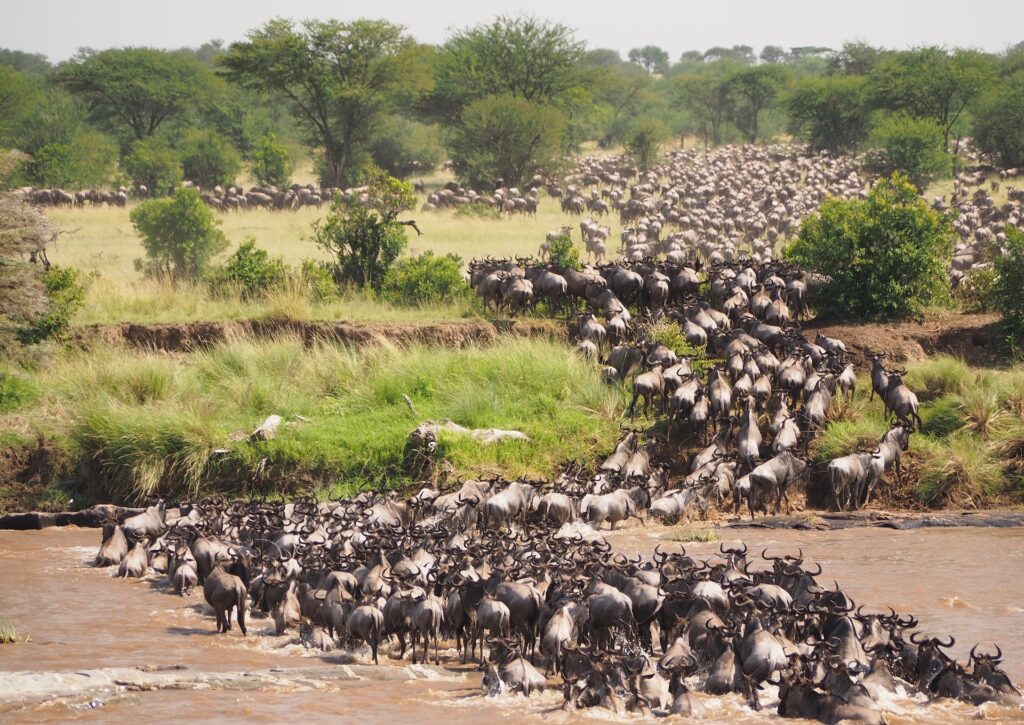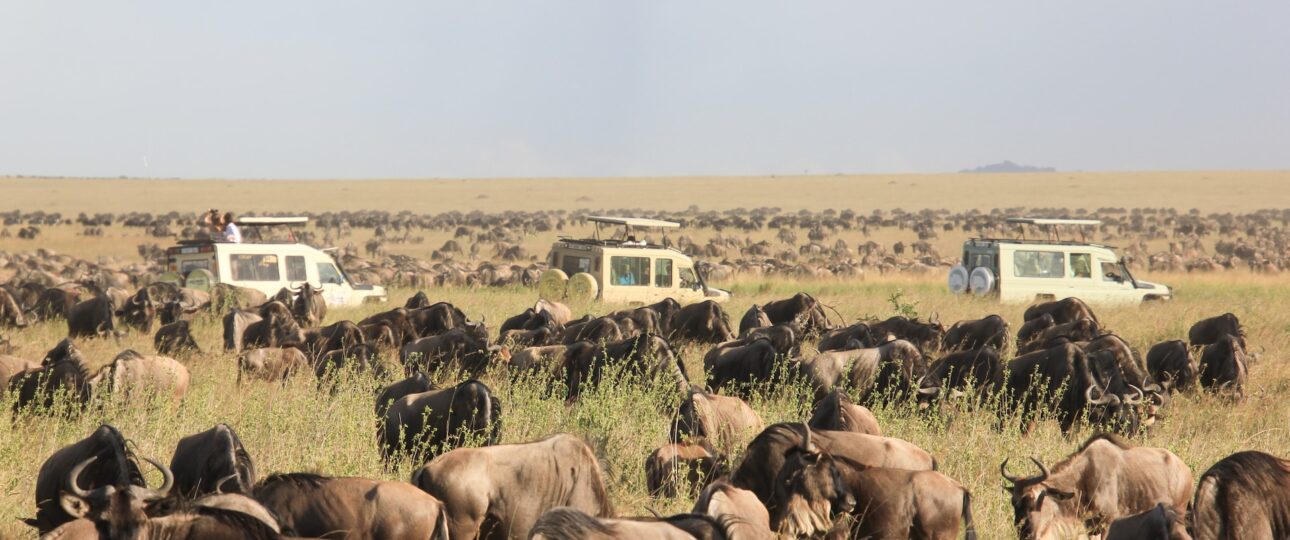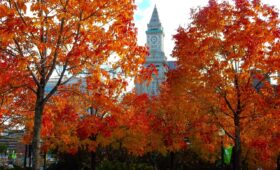The wildebeest migration is one of the most amazing things you can see on a trip to Africa.
If you are keen to see it for yourself, check out our guide with more about the migration, the best places and times of the year to view it and top tips.
What is the Wildebeest Migration?
The wildebeest migration travels on a loop path through Tanzania and Kenya following the seasonal rains even when that involves passing through dangerous territory.
Best Time & Places to See the Wildebeest Migration

The Migration of the Wildebeest is best seen in December, January, February and March.
The Serengeti National Park and Ngorongoro Crater are arguably the most impressive wildlife sanctuaries in the world.
During the months of December through to March, the seemingly endless plains of the Southern Serengeti and the Crater are inhabited by massive herds of wildebeest and zebra.
The enormous herds graze on the lush grass. In the calving season (late January through to mid March) the herds are concentrated here, attracting the attention of predators like lion, cheetah and hyena.
April & May
During the months of April and May the over-grazed plains are unable to sustain such massive herds. The migration sweeps northwest, moving from the short grass plains of the southern Serengeti and the Crater to the long grass plains and woodland of the Serengeti’s western corridor, towards Lake Victoria. This period is during the long rains and is considered unsuitable for game viewing as roads are often closed or impassable.
June
By now the wildebeest herds have depleted the western corridor’s pasturelands and the herds must continue north to graze further. May through June is the period where breeding occurs and is a transitional period between the wet and the dry season.
July, August, September & October
In early July the numerous herds have gathered at the banks of the Mara River, the final hurdle to the lush grasses of the Masai Mara. Desperate to feed, the wildebeest and zebra must negotiate crocodile infested waters. Due to their large numbers the majority of animals pass safely, however predators take advantage of stragglers whilst others drown in strong currents. During this period the wildebeest remain in the Mara.
November
The arrival of short rains draws the migration south. Towards the end of November the herds make their way back into the southern Serengeti and the cycle continues.
What to Know Before Booking Your Trip
The Wildebeest Migration is a naturally occurring event and timings may vary depending on the seasonal rains. If you want to see more of the region whilst here view Africa tours.




